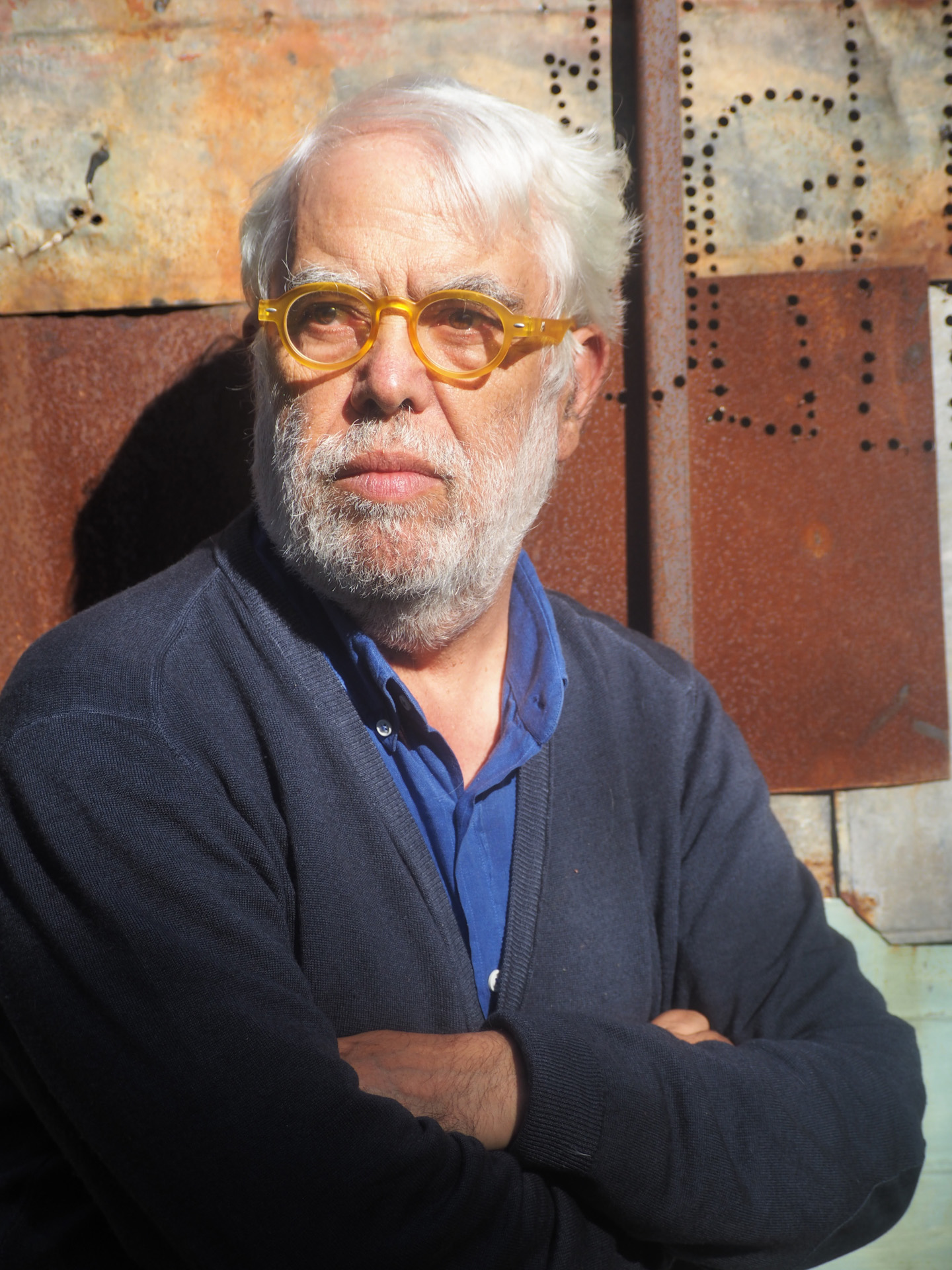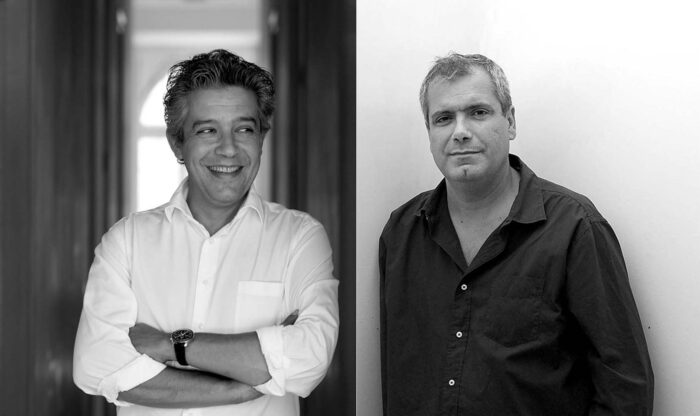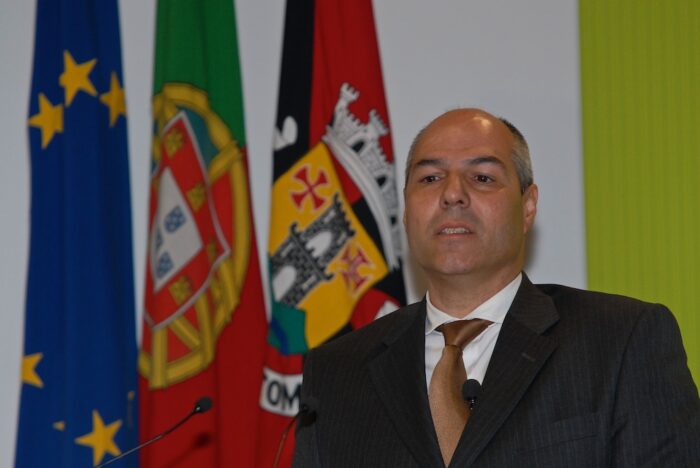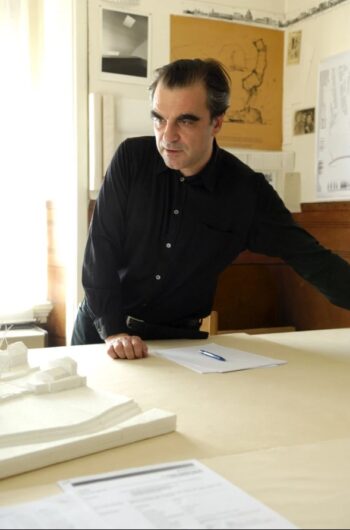A conversation with Arch. Fernando Bagulho

A conversation with Arch. Fernando Bagulho
There is a rally of C130 planes, systematically won by Portuguese from the Portuguese Air Force, which owns half a dozen planes, against crews of countries with hundreds. I will say the same about the architects of a land where the easy is never possible and everything is achieved with effort ’
In 1976, you’ve founded Atelier do Chiado, with Cristina Salvador. Tell us about the history of the Atelier.
In 1974, we were in Angola, Cristina expecting an Angolan daughter, due for delivery on April 25, and myself waiting for another 9 months to finish the troop. Seen from below, the events in the metropolis did not seem real, but rather a kind of fiction between a Tolstoy novel and a John Reed book. On our return, the studio itself was the only way to exercise the profession, with all the ateliers blocked and without work to offer to those returning from the war.
Atelier do Chiado has a strong connection to Angola. It designed, among others, the ESCOM building, emblematic in the city, symbol of the country’s development. How has it been working in Angola?
Architecture and music are universal languages that respond, in the contingency of each creation, to the problem posed. Working in Angola, France, Egypt, Russia or anywhere else has always been a common theme for architects. The instruments for the creation of architectural facts, the cultural heritage of each place or the instruments of their own materials vary, but, since architecture is a phenomenon linked to emotions, we work for the universal man, in the circumstances and contingencies of each place, whose in-depth study creates a base for each project.
Do you think a good job is being done in the country, in terms of urban planning, or is there a lot to do in this field?
Bad work is being done in parts of the world where there is economic growth and only in depressed economies we don’t see so much nonsense, but for the worst of reasons and to the detriment of people. The house lost its use value to that of exchange, becoming a financial product, which brought the middle class to the limit. The transformation of consumer goods into financial products is catastrophic globally and the hardest hit are always the weakest.
The number of architects trained in Angola is still small. Do you consider that the tendency is to westernize architectural features or, in general, is work being done that takes into account the characteristics of the country?
As for the Angolan architects with whom I work directly, I do not see that they are more fragile in relation to external influences than those of any other country. The same will be said of my African students at FAUTL (now FAUL), all of high quality, based on a humble posture in relation to knowledge, as a secure basis for the learning process.
Based on your teaching experience, how do you describe architecture education today in Portugal?
On the results side, I will say that students and architects enjoy a good performance evaluation everywhere. There is a Rally for C130 airplanes in the USA every year, systematically won by Portuguese Air Force crews, which have only half a dozen planes of this type, competing with crews from countries that have hundreds. The same can be said of architects, distinguishing themselves in the work of the project, for their expertise in making it take off and land on dry land. We must all have benefited from learning in a land where the easy is never possible and everything is achieved with effort, in an aggressive and sometimes hostile environment.
What is it that you have always tried to convey to your students so that they can be trained, either as future professionals or as “opinion makers”?
Be wary of arrogance, as well as monumentality, and do not fear the humility of the architect “worker of the project”. Have fun listening to opinion makers but build your own opinions based on thinking, not listening.
Your positions related to RGEU [National Architecture regulation], speculative real estate interests, management errors of State organisms are well known… In your opinion, what should change in the rules that govern architecture?
Real estate speculation is a disease that does not serve society or the investor. In countries like the Netherlands, real estate investment is subject to a maximum rate of return, from which everything goes to taxes, and there is no shortage of people or capital to invest, with the market and supervision working well. I understand that the building regulations should not be prescriptive, but should be oriented towards the performance of protecting human beings from the aggressiveness of the climate, that is, that they must be supported first by the laws of Physics and, secondarily, by the rest. Without citizenship, the investor is more unprotected. Anyone who does not want to install gas, or more than a mailbox to communicate with the outside, in a building for their exclusive use, is legally inhibited from doing so, but in relation to earthquakes, which stem from the laws of Physics, they will be subject to less control.
In the light of your professional experience, how do you see contemporary architecture in Portugal?
Architecture was never subsidized and (perhaps for this reason) it reached an external projection unthinkable for such a small and peripheral country. Do Portuguese architects distinguish themselves in the same way as Ethiopians in marathon events? Does their daily struggle against adversity prepare them to reach higher levels of expertise (which is reflected in the results)?
SAAL, created in 1974, was a unique movement in the history of urban thought. How was it to participate in this program? Would a new SAAL make sense or was it possible today, given the shortcomings that are felt?
SAAL was a unique and fantastic experience, globally. The Portas Decree said one thing and the tensions and game of forces in presence made new and varied ones, which means that that legal framework was a good basis for work. I am sorry that some ideas then generated have not been put into practice, such as the one that took the decree to the limit, regarding the investment of resources to poorly housed populations, sending public investment to the streets, squares and infrastructured facades of buildings , supporting flexible evolutionary housing. Today, it is no longer just the lumpen that is leaning against the wall, but wide fringes of the middle class that are in a precarious situation with not enough income to be able to maintain the house they bought using a mortgage loan. The movements of co-housing, that arise everywhere, are a possible answer and the Decree of Portas continues to be applicable in full sense, if there is enough political will to follow different paths, in which many consumption habits will have to change .
This interview is part of Revista Artes & Letras # 56, September 2014
Partially automatic translation from portuguese: some expressions may differ from their actual meaning.
News & Interviews
A conversation with Arch. Manuel Aires Mateus
'The great advantage with brothers is the total lack of ceremony, which makes us have violent discussions and resolve everything very quickly.' Read more
A conversation with Eng. José Manuel Faísca
'Having cemented the investment in the electrification of the railway infrastructure, it becomes important to accelerate electric mobility in the country […] It is up to IP to play a dynamic role in promoting environmentally friendly policies' Read more
A conversation with Arch. José Neves
‘One of the few certainties I have about architecture is that we should only destroy or replace what we can do better.’ Read more




